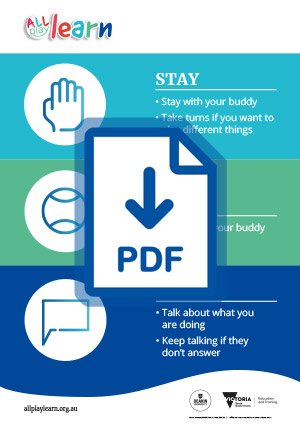Peer Mediation
Research has found that peer mediation is one of the most effective approaches for supporting the inclusion of children, and the development of social skills. Peer mediation is particularly relevant for children who find joining in or engaging with peers challenging, such as children with autism.

So what is peer mediation?
Peer mediation involves teaching the peers of children with disabilities how to communicate, include and interact with children who may need support with communication or participation. This involves recognising the impact of the environment and focusing on making changes at this level rather than trying to change the child. The child’s peers may benefit from learning how to adapt their own communication and social approaches to be inclusive of others. Research suggests that peer mediation works best when a child with a disability is also participating in individualised explicit teaching of communication or social skills. Bridging social and communication gaps can be achieved when the child AND their peers actively learn how to communicate and interact with each other.
What if a child or their family do not wish to have their disability disclosed to others?
Peer mediation can be used without identifying a child with a disability. Instead, specific social or communication goals can be identified for the whole group. For example, instead of singling out a child who might need support with joining in or communicating, educators can explain to the group that mediators help all children to join in, and that part of being a mediator is learning how they can communicate with others who are quiet or don’t use words to communicate.
Could peer mediation negatively impact the wellbeing, inclusion or learning of peers?
When done with guidance and supports in place, research suggests there is no negative impact on the friendships and perceived ‘social status’ of peer mediators. In fact, the only impact that research has identified is that peer mediators are more likely to identify a child with a disability as a friend after being a peer mediator! Peer mediation typically includes a range of peers as mediators, which may also be important for ensuring positive outcomes for all, rather than relying on allocating one particular mediator/buddy to a child with a disability.

Characteristics of effective peer mediation
- Peer mediation typically involves the inclusion of several peers as mediators. Including more than one peer means that a child has many peers to play and interact with and is not dependent on one specific peer (leaving the child without other options if the peer is absent). Interacting with many different peers also helps a child generalize the communication and social skills they are learning.
- Peer mediators who are friendly and good communicators tend to make great mediators.
- Regular guidance and practice is important for successful peer mediation

Teaching peer mediation
Peers can act as social mediators in early childhood education and care settings. Initially, educator support in the form of prompts will be needed, however this can be faded as children become proficient in interacting with each other. Consider teaching one skill at a time, and giving children time to become proficient in that skill before moving onto the next skill. A range of approaches can help mediators acquire mediation skills. These include:
The following diagram outlines some of the key steps to teach peers to be mediators. For a more in-depth discussion of peer mediation, see the Autism lesson in AllPlay Learn’s Early professional learning course.


